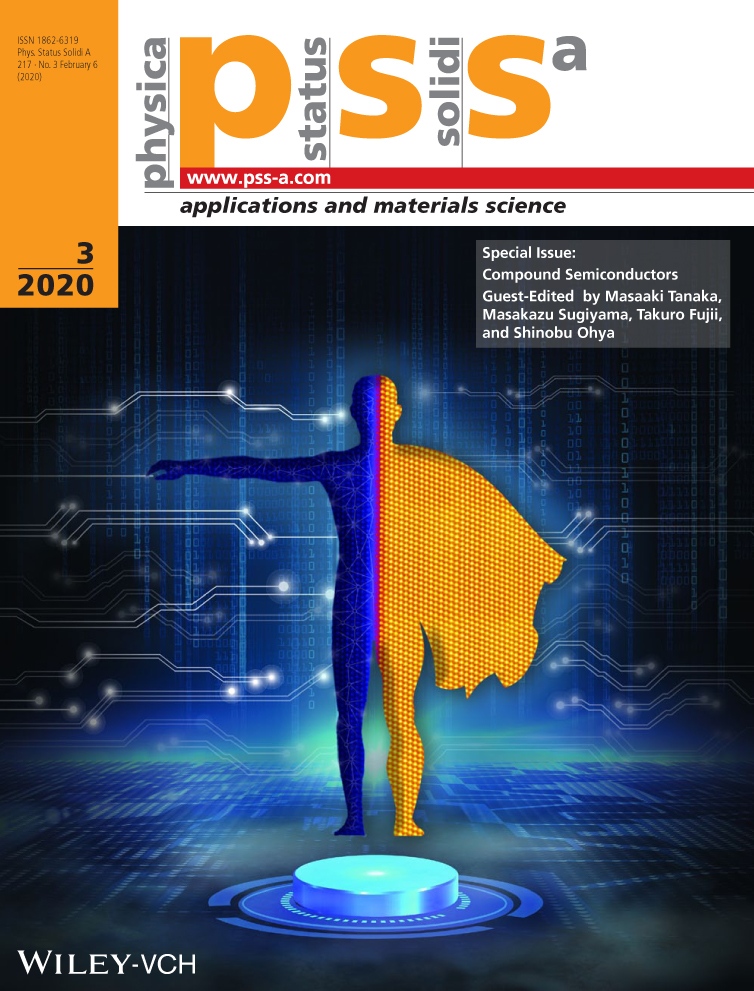Metalorganic Chemical Vapor Deposition of over 150-nm-Thick Quaternary AlGaInN Epitaxial Films near Alloy Composition Lattice-Matching to GaN on Sapphire and Their Structural and Optical Characterization
Abstract
Quaternary AlGaInN films with thickness greater than 150 nm are grown on c-plane GaN-on-sapphire templates by metalorganic chemical vapor deposition (MOCVD). The AlxGayInzN films near alloy composition lattice-matching to GaN on sapphire (0.532 ≤ x ≤ 0.716, 0.146 ≤ y ≤ 0.366, and 0.092 ≤ z ≤ 0.182) are confirmed to be epitaxially grown, and they show relatively flat surfaces regardless of their lattice strain and their direction. The crystal mosaicity in the AlGaInN films is observed to take over that of the underlying GaN films. The refractive index of AlGaInN films ranges from ≈2.4 to 2.3 in the whole visible wavelengths, largely independent of their alloy compositions. Spectroscopic ellipsometry and photoluminescence analyses indicate that the MOCVD-grown AlGaInN films have a certain degree of compositional fluctuation affecting their optical band edges.
Conflict of Interest
The authors declare no conflict of interest.




